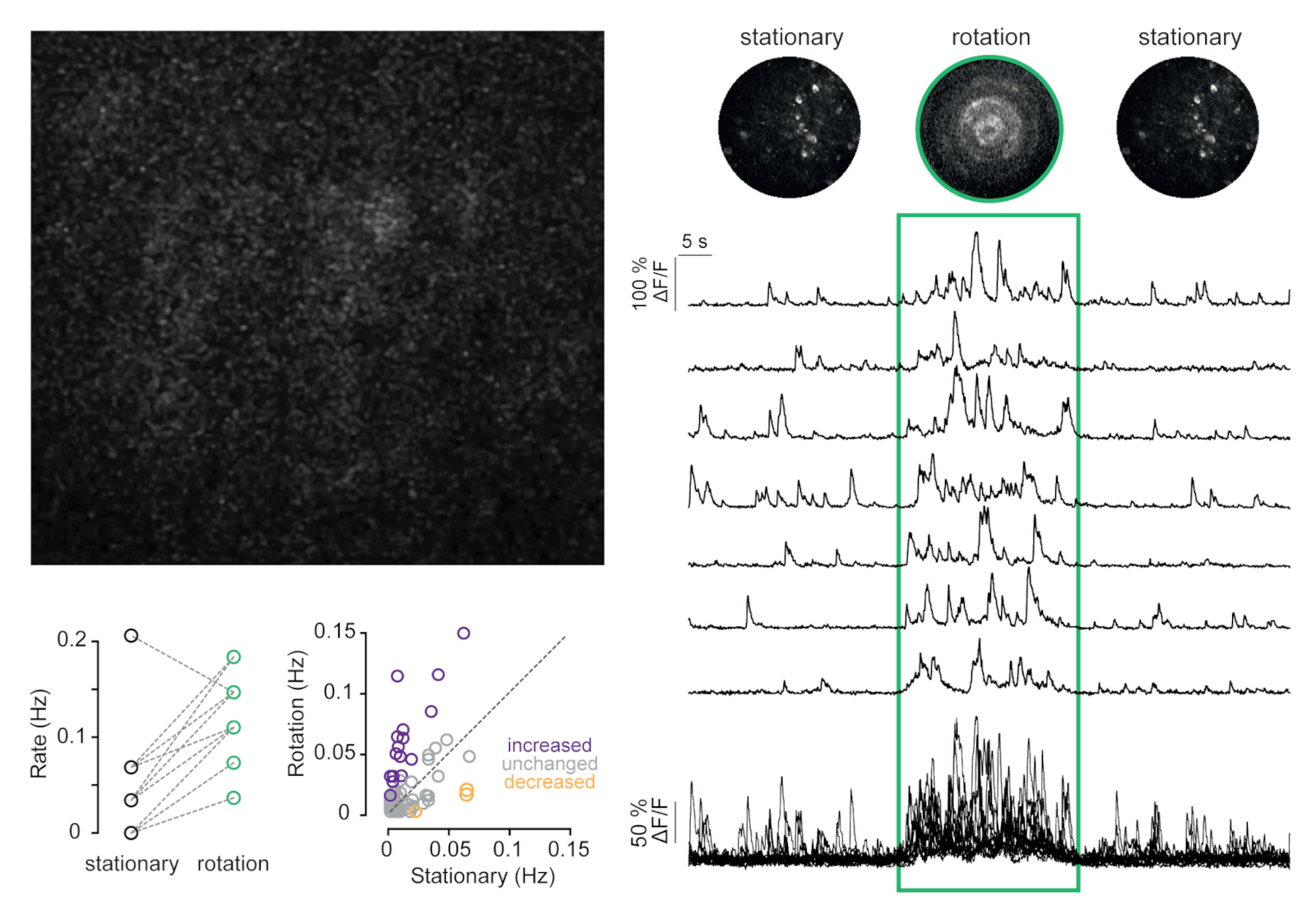Research Topics
-
A fundamental component of navigation is the ability to sense one’s orientation relative to the surrounding environment. The brain combines self-motion cues with information about the environment’s layout, such as visual landmarks, to calculate spatial orientation. We aim to understand the neural circuit mechanisms that underlie this process, with a primary focus on thalamocortical pathways connecting different nuclei of the anterior thalamus to the retrosplenial cortex (RSC), a key region involved in spatial navigation. Our goal is to determine how thalamic inputs affect the RSC’s orientation computations, how they contribute to the ability to track one’s heading and orient to the correct direction during navigation, and how various types of information are routed within these circuits.
-
Accurately perceiving our movements in space is essential for successful navigation and understanding of the world around us. We investigate how the cortex processes and integrates incoming sensory and motor inputs to generate neural representations of self-motion. Specifically, we aim to determine how different types of self-motion signals from vestibular, visual and motor systems reach and integrate in cortical areas involved in navigation. We also examine how local and long-range cortical networks support this integration and contribute to the perception of self-motion.
-
Age-related declines in spatial navigation abilities are common, even in individuals without pathological conditions. Spatial disorientation is also one of the earliest symptoms of Alzheimer's disease. These navigational deficits are not solely due to general learning and memory impairments, but instead involve compromised computation of spatial information in key regions of the brain's navigation system. One area of research in the lab involves investigating the impact of ageing on neural representations of spatial orientation and self-motion. Our aim is to determine age-related changes in the central processing of vestibular signals and their integration with vision, as well as how these alterations influence the encoding of head direction and self-motion. Additionally, we seek to uncover the underlying cellular and synaptic mechanisms behind such changes. By studying these questions in both healthy aged animals and in mouse models of Alzheimer's disease, we hope to deepen our understanding of normal and pathological cognitive ageing, which can potentially lead to developing better diagnosis and interventions to support healthy ageing.
Research Approaches
To examine our research questions, we employ a diverse set of research tools and techniques. We develop quantitative tasks to assess spatial orientation abilities and self-motion perception in both restrained and freely moving mice, and record neuronal activity using high-density extracellular electrodes and calcium imaging (two-photon and miniscope) during behaviour or while mice are presented with different sensory stimuli. To examine how the activity of specific circuits and cell types contributes to behaviour, we use opto- and chemogenetics combined with viral and transgenic tools. Additionally, we employ anatomical tracing methods, in vitro intracellular recording, and modelling to determine circuit architecture and function.
Collaborations
We have ongoing collaborations with:
The Neuroinformatics Unit (NIU) to develop computational tools for data management and analysis in Neuroscience, such as DataShuttle and movement.
Prof. Troy Margrie at the Sainsbury Wellcome Centre and Prof. Maneesh Sahani at the Gatsby Computational Neuroscience Unit to elucidate neural representations of self and external motion across multiple brain areas involved in spatial orientation.







